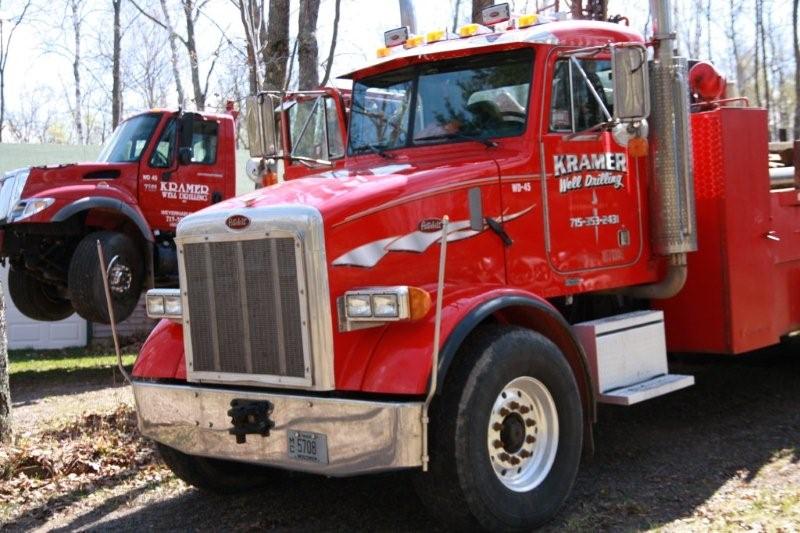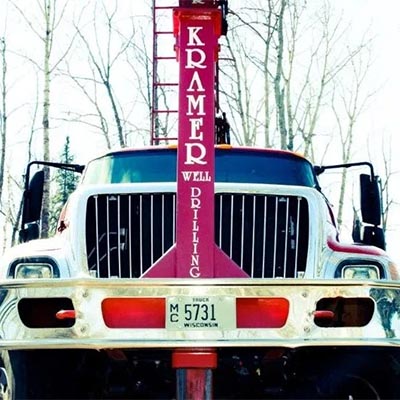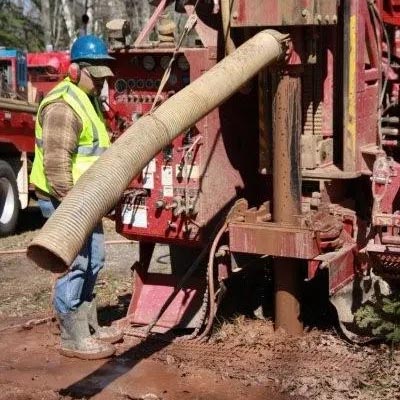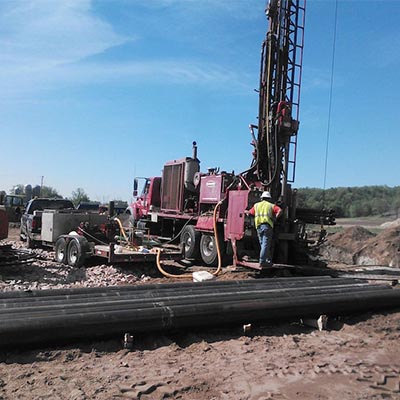Well Drilling
Kramer generally uses Drill and drive as the process for standard well drilling. This means that we drill the bore hole and advance the casing at the same time. This is done using compressed air. When the casing is placed to proper depth with sufficient quality water, the screen is installed. The screen and seal are then put in place and the well is developed. The well is then tested and disinfected. At this point the well is ready to be hooked up and put in service.
- Residential
- Commercial
- Irrigation
- High capacity wells (wells that produce over 69 gpm)
- Monitor wells
- Geothermal vertical wells

Permits & Procedures
Kramer will obtain all the necessary permits for your well installation. State and county codes are strictly followed to assure proper and long lasting performance and quality of your well.
Installing Process
We meet with the owner/builder to choose a site that meets all code requirements. The drill crew will bring the rig in and set it up. We start by sliding the first rod with the drill bit on into the first piece of casing. We then hook a winch cable to it and bring the rod and casing to the top head and connect it. Then we weld a hardened drive shoe to the casing so it does not damage the end. We then set the hydraulic casing hammer on top, engage the top head and air compressor then start drilling.
As we continue down with the well casing we check to see where the static water table is. Once we know that, then we have to go 10′ into it then start looking to see if we have the right material to make a well. When we talk about material we mean clean sand or clean sand and gravel. We cannot make a well out of clay or silt because it will plug the well screen.
Once we are done drilling we then pull our rods and set a well screen. Then we develop the well out with air, set a test pump and check the quantity and quality of water.
When drilling a well, certain applications are different than others. Some will require a screen and some will not. If a screen is required it will be of top quality wire wound stainless steel , which is installed at the proper depth for each well.
Sealing Process
All wells are sealed to prevent any and all contamination to the water supply. A cement grout or bentonite seal is used for this process depending on the type of well. Iron, Nitrate and Ph testing is done on site. Samples are also taken and sent in to the state of Wisconsin to test for bacteria, which is required by state law.
Need us to take a look at your well?
Our Fisheye Camera along with the 15″ video command console we can look at your well without removing any major parts and let you see exactly what is going on down there.
Camera has 180° lens which shows twice as much detail as a standard lens. This allows for viewing the sidewalls as well as down the well all at the same time.
- Sharp resolution at 550 lines of resolution
- Sealed for submergence to 1,000 feet



